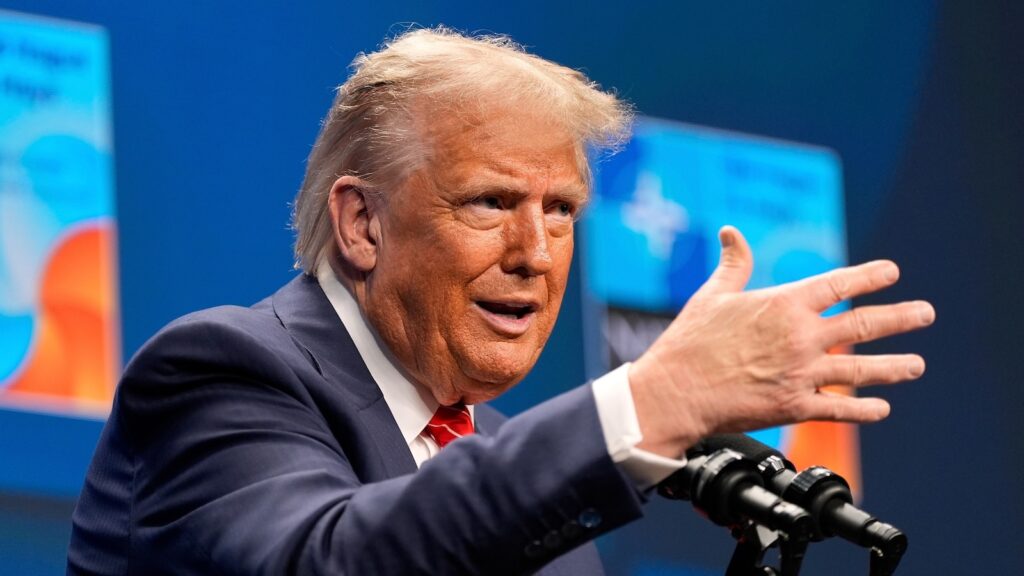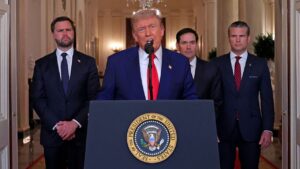
President Donald Trump’s use of the term “obliterated” to describe the impact of U.S. strikes on Iran’s nuclear sites has ignited a political firestorm. Despite a U.S. intelligence report suggesting otherwise, Trump and his aides have stood by the claim, which has become a focal point of expert debate and political criticism.
The controversy erupted after Trump announced last Saturday that the U.S. military strikes had “obliterated” Iran’s nuclear facilities. Speaking at the NATO summit in The Hague on Wednesday, Trump defended his choice of words, even as a preliminary U.S. intelligence analysis indicated that Iran’s nuclear program had only been set back by a few months.
“The original word that I used, I guess it got us in trouble because it’s a strong word, it was obliteration,” Trump stated. “And you’ll see that and it’s going to come out. Israel is doing a report on it, I understand.”
U.S. Strikes and Initial Intelligence Reports
The U.S. strikes, executed on the night of June 21, targeted three key Iranian facilities: Isfahan, Natanz, and Fordo. The operation involved massive 30,000-pound bunker-buster bombs, marking the largest B-2 strike in U.S. history. Trump declared the strikes a “spectacular military success,” asserting that Iran’s nuclear enrichment facilities were “completely and totally obliterated.”
However, Gen. Dan Caine, chairman of the Joint Chiefs of Staff, cautioned that it was “way too early” to ascertain the full extent of the damage, though he confirmed “extremely severe damage and destruction” at all three sites. A leaked initial assessment by the Defense Intelligence Agency, with input from U.S. Central Command, suggested that while entrances to two sites were sealed, significant damage was limited to above-ground structures, leaving subterranean facilities largely intact.
According to sources familiar with the report, “at least some enriched uranium had been moved from the nuclear sites ahead of the blasts and that centrifuges are largely intact.”
Political Reactions and Criticism
The description of the strikes as “obliterated” has drawn criticism from several top House Democrats, who expressed frustration over the sudden postponement of an administration intelligence briefing initially scheduled for Tuesday. Representatives Gregory Meeks, Jim Himes, and Adam Smith issued a joint statement speculating that the administration might be reluctant to address questions about the President’s claims.
Democratic Senator Mark Warner of Virginia, vice chair of the Senate Intelligence Committee, voiced his concerns, stating, “I can tell you there was plenty of debate in the open domain about whether bunker-buster bombs alone could take out Iran’s facilities. We also have got questions about where all of Iran’s enriched uranium is located at this point and if it’s not taken out, what next? Are troops still in harm’s way?”
Defense and Counterarguments
In response to the initial report, Trump and Defense Secretary Pete Hegseth pushed back heavily. Trump criticized the Defense Intelligence Agency for presenting an “unfinished” report and claimed that subsequent intelligence collection supported his “obliterated” description.
“The report said what it said, and it was fine,” Trump remarked. “It was severe, they think, but they had no idea. They shouldn’t have issued a report until they did.”
Hegseth, speaking alongside Trump, emphasized the devastation caused by the 30,000-pound bombs, particularly at the Fordo site. “Any assessment that tells you it was something otherwise is speculating with other motives,” Hegseth asserted. “And we know that because when you actually look at the report, by the way, it was a top secret report, it was preliminary, it was low confidence.”
Standing at Trump’s side, Hegseth echoed, “Iran’s nuclear program is obliterated.”
Implications and Future Considerations
The debate over the extent of the damage to Iran’s nuclear sites underscores the complexities of military assessments and intelligence reporting. As the situation evolves, the international community will be closely monitoring the implications for regional stability and nuclear non-proliferation efforts.
Moving forward, the administration’s handling of the intelligence briefing and the accuracy of its claims will likely remain under scrutiny. The potential for further geopolitical tensions and the impact on U.S. foreign policy objectives will be key areas of focus in the coming weeks.





